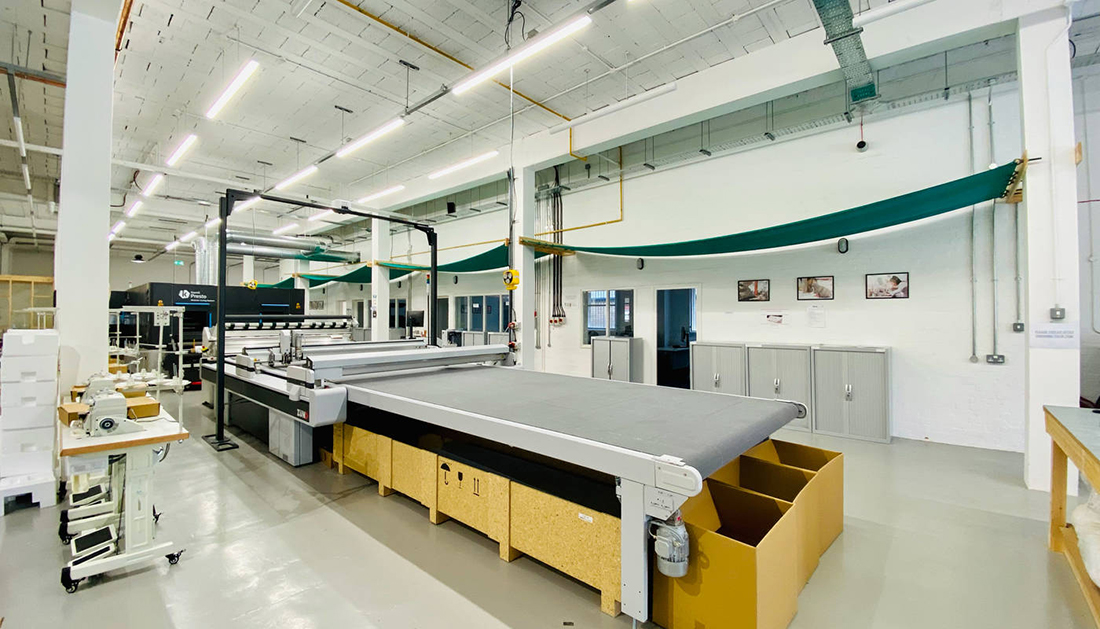In the dynamic and global textile fiber industry with its various manufacturing processes and end-uses, news and information is breaking on a daily basis. International Fiber Journal is tracking stories relevant to our industry from manmade to natural to bio-based fibers, innovations in nonwoven, woven, braided and technical textiles, technologies for additives, bonding, coatings and polymers, and applications from apparel to hygiene to transportation, and more. Here we will post news stories relevant to textile fibers and their downstream applications on an ongoing basis. Please check back for regular updates. If you have news that you feel should be added to this summary report, please email it to Matt Migliore at mmigliore@inda.media.
Most recent update: June 30, 2021
Zund UK partners with Fashion-Enter to demonstrate sustainable micro-factory concept
The Zund UK and Fashion-Enter partnership will showcase a sustainable micro-factory concept in the UK, which uses the latest technology and advanced workflow processes.
Dean Ashworth, sales and marketing director at Zund UK said, “The project is aimed at brands and retailers; we want to demonstrate to them how they can create a sustainable manufacturing facility in the UK. We believe onshoring apparel manufacturing will support the growing trend for made-to-order and ethical production. Furthermore, technology and production strategies are developing to deliver the capabilities needed to reshape the fashion industry. Zünd single-ply cutters are setting new standards in speed, efficiency, and accuracy. The Zünd D3 cutter delivers ultimate performance and productivity with two cutting beams operating simultaneously with sophisticated nesting algorithms increasing material yield and helping to keep production costs low.”
Jenny Holloway, CEO at Fashion-Enter said, “In light of the recent unprecedented demand for make in the UK, the timing of our unique partnership is excellent. In the last week alone we have had five major retailers and etails contact FEL for speed of response fashion and now, thanks to Zund’s outstanding cutting technology we can commit to leaner and more efficient manufacturing. Zund is particularly effective on one piece flow which is the future of garment manufacturing working within the parameters of a micro-factory which in time we will extend to our Welsh site too in Newtown Powys. We would like to say a genuine thank you to the amazing team of Zund who spent the last week installing and calibrating the D3 cutter. Now, this really is state-of-the-art manufacturing.”
Fashion-Enter is a not-for-profit social enterprise, which strives to be a center of excellence for sampling, grading, production, and for learning and development of skills within the fashion and textile industry.
Source: zund.com
Bostik introduces ‘Responsibly for Hygiene’ program around corporate social responsibility & sustainability in absorbent hygiene
Bostik, the adhesive solutions division of Arkema, announced its “Responsibly for Hygiene” program to support manufacturers of absorbent hygiene articles in meeting their sustainability development objectives. The program incudes webinars, podcasts, content and product launches, which are designed to help producers at all levels continue to expand their corporate social responsibility (CSR) and sustainability knowledge and make decisions supported by a holistic approach to the topic.
“Cultivating an open dialogue about sustainability and CSR is a key commitment for Bostik,” said Christophe Morel-Fourrier, global marketing manager for Market Insights and Sustainable Innovation at Bostik. “We have seen that article producers’ knowledge and understanding of CSR is at varying stages across the globe. Some have clear, well-thought-out strategies that they are communicating. Others need support.”
Source: bostik.com
Tidal Vision, Leigh Fibers partner to open bio-based textile treatment manufacturing facility
Tidal Vision announced a new partnership with Leigh Fibers and the opening of a new production facility in Wellford, South Carolina. The partnership is focused on sustainable bio-based textile treatments.
Under terms of the partnership, Tidal Vision will open a new 24,000 sq. ft facility within Leigh Fiber’s 1,000,000 sq.ft headquarters in Wellford, providing economies of scale.
Textile fibers used to produce apparel, carpet, mattress, furniture and many other products are often treated with toxic antimicrobials and fire retardants.These nonbiodegradable chemicals, such as heavy metals like silver or copper, often end up washing out and polluting waterways.
Tidal-Tex is Tidal Vision’s product line of water-based textile treatment solutions that are formulated with a non-toxic, abundant and biodegradable biopolymer called chitosan. To make switching convenient, Tidal-Tex is customized to be a “drop-in” product that is usable in textile manufacturers’ existing infrastructure. Tidal Vision sources, extracts and processes chitosan from crab and shrimp shells, byproducts of the seafood industry that would otherwise be discarded.
“Our proprietary lower-cost chitosan technology, combined with lower freight costs from our new facility, allows us to deliver our Tidal-Tex product line to textile manufacturers at a price point less than half of many heavy metal antimicrobials, such as silver and copper. This is the first time that fiber, yarn, and textile manufacturers have had an environmentally friendly option at a lower cost with equivalent or better performance. I believe the entire industry will adopt these bio-based chemistry treatments now that we conveniently have a facility in the heart of the textile industry and a reputable partner in Leigh Fibers.” said Kari Ingalls, director of Textile Business Development at Tidal Vision.
Tidal-Tex can be applied to textiles through a simple dip, spray or coating application where curing is as easy as drying, or removing the water, and leaving behind the desired performance benefits. Tidal Vision formulates different variations of Tidal-Tex to provide biostatic, fire retardant, or anti-odor properties to textiles. Tidal-Tex product line offers formulas with Tidal Vision’s patented crosslinking technology for unprecedented washing durability performance. These high-performance bio-based treatments are applied to fibers, yarn, woven or nonwoven textiles – which make up products ranging from furniture, mattress to apparel and more.
Tidal Vision and Leigh Fibers are looking forward to the positive impact their partnership will have on the textile industry and the environment. Tidal Vision’s CEO Craig Kasberg, said, “Our mission is to create positive and systemic environmental impact. In the textile industry, to have the biggest impact it made sense to start with fibers treated at the top of the supply chain. Leigh Fibers was our ideal partner since their mission, values and business model are so synergetic with ours. Both of our companies produce sustainable solutions by upcycling byproducts that would otherwise end up in landfills, and through vertical integration we provide high performance products out of what was previously considered waste.”
“Partnering with Tidal Vision is a win-win for our company, our customers, and the environment,” said Eric Westgate, SVP of Leigh Fibers. “Their Tidal-Tex™ product line delivers the key benefits that our customers look for in textiles at a lower price and is made from sustainable materials in the USA. At Leigh Fibers, we’re committed to advancing sustainable innovation and repurposing textiles for a cleaner, healthier planet.”
Sources: tidalvision.com and leighfibers.com
REXtac, DL Chemical partner to build 88 M pound APAO plant in South Korea
REXtac LLC, of Odessa, Texas, has joined with DL Chemical of Seoul, South Korea, to establish a joint venture to construct and operate an amorphous poly alpha olefin (APAO) manufacturing plant located in Yeosu Industrial Complex in South Korea. With an investment of $134 million, the APAO plant will have an annual capacity of 88 million pounds per year. Groundbreaking on the new plant is scheduled to begin this year and will commercially operate in 2023.
APAO hot melt polymer and adhesive is widely used in a variety of applications, including hygiene products, HVAC filters, automotive interiors, and other industrial applications.
The joint venture will leverage DL Chemical’s global network to actively expand into the hot melt adhesive market, valued close to $10.4 Billion. This partnership will combine DL Chemical’s research and development capabilities with REXtac’s APAO manufacturing technology and R&D.
Nick Fowler, president of REXtac LLC, said, “REXtac is excited to be able to partner with a world class, experienced, petrochemical company, DL Chemical. The joint venture manufacturing capability will provide global service, supply, and delivery security to our ever expanding customer base and free REXtac USA from total dependency on North American propylene prices.”
DL Chemical is a specialized petrochemical company headquartered in Seoul, South Korea. REXtac LLC was founded in 2009 by an acquisition from Flint Hills Resources and Huntsman Chemical. REXtac LLC is a leader in manufacturing APAO and produces it through a proprietary catalyst and liquid pool production process.
Source: rextac.com
Beckmann offers fire barrier fabrics to help furniture makers meet the requirements of new flammability test standard
Beginning June 25, 2021, furniture makers globally are required to ensure compliance with a new flammability test standard for any upholstered furniture they sell in the United States. To help manufacturers meet the new requirements, Beckmann Converting, Inc, through its Sandel International division, is offering two different fire barrier fabrics which pass TB 117-2013 “smolder” tests originally established in California in 2013 to limit consumer exposure to chemical flame retardants.
Known as the Safer Occupancy Furniture Flammability Act, or “SOFFA,” the new regulation was incorporated in the COVID-19 Regulatory Relief and Work from Home Safety Act passed by Congress and signed into law by the president on December 27, 2020.
Among the options available to furniture manufacturers is use of a fire barrier material between the outer covering fabric and the foam contained in seat cushions and back cushions. TB 117-2013 has a specific testing protocol for use in evaluating fire barrier materials. Two different Sandel fire barrier fabrics, referred to as Style #14502 and Style #60502, both passed the rigorous test procedure.
“We believe the two Sandel fire barrier fabrics offer furniture manufacturers globally simple, lowest total cost solutions for meeting the new regulations,” reports Ray Piascik, director of marketing and sales for Beckmann Converting and its Sandel division. “Sandel customers selling their furniture in California and a few other jurisdictions that had also adopted the standard report our fire barrier materials are easy to incorporate without placing limitations on their designs”.
The primary difference between the two styles is that #14502 is a breathable material while #60502 is non-breathable. Furniture makers have been known to incorporate both versions into their designs to allow air breathability while maximizing flammability protection. Both materials are available as stock items in white and by special order (made to order) in black.
The Sandel materials are lightweight (4 to 5 oz/sq yard) and will not ignite, melt, or drip. They are flexible and will not shrink, stretch, or rot over time. Both styles exhibit minimal smoke emission. Further, they are water repellant and non-allergenic. Specification sheets available from Sandel provide additional characteristics.
Source: beckmannconverting.com
DITF designs goalkeeper gloves with integrated textile finger overstretch protection
The German Institutes of Textile and Fibre Research Denkendorf (DITF) has partnered with T1TAN GmbH to develop effective finger overstretch protection for soccer goalkeeper gloves. The glove developed at the DITF is designed to prevent 90% of injuries caused by over-stretching.
“The research task is very demanding,” said Hans-Helge Böttcher, a scientist at the Technology Center Knitting Technique at the DITF in Denkendorf. “The textile material not only has to protect the fingers from extreme stress, it also has to be flexible and not restrict sensory perception.”
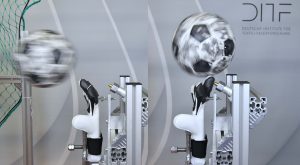
To achieve the protection, a technical concept was developed that absorbs the force in the fingertips and transfers it to the forearm via the wrist cuff without deforming the glove. The central functional elements of the overstretch protection are load-absorbing textile structures with specific force-elongation mechanics. These structures are sewn on from the finger end joint of the outer hand to the finger end joint of the inner hand and are anchored in the glove. The wrist is enclosed by a cuff made of elastic material and load bearing textile straps to transfer tensile force via channels in the palm. The protective device can be adjusted to fit hand length and individual fingers, replacing plastic splint attachments.
The project is set to be completed in September 2021, with a goal of integrating the technology at the World Cup in Qatar.
Source: ditf.de
Registration opens for virtual edition of 60th Dornbirn Global Fiber Congress
The Dornbirn Global Fiber Congress announced its 2021 virtual program with 90 lectures and 25 exhibitors from the fiber industry. The program is scheduled for September 15-17, 2021, and registration is now open at https://dornbirn-gfc-2021.enra.app/. The full conference program can be found at https://www.dornbirn-gfc.com/en/programme/programme-2021/.
Presentations will focus on:
- Fiber Innovation
- Circular Economy
- Sustainability
- Surface Modification
- Apparel and Machinery
The event will feature active networking and virtual exhibitions.
Source: dornbirn-gfc.com
Shawmut Corporation hires Noelle Christensen to lead new Military & Protective Materials business unit
Shawmut Corporation announced the creation of a new Military & Protective Materials business unit, which will be led by Noelle Christensen. Christensen has more than 20 years of supply chain and business development experience, spending 14 years at Massif, most recently serving as its VP/GM.
Shawmut’s military and protective solutions feature waterproof, windproof, flame-resistant and chemical and biological protection applications for use in military and in-the-field professions.
“As a previous customer of Shawmut, I bring a unique perspective to the team, having witnessed its engineers solving seemingly unsolvable problems,” said Christensen. “I am excited about how much more Shawmut has to offer than the market is aware of, such as our ability to quickly solve complex problems and test products on the fly for rapid innovation, and our dedication to quality control that ensures premium, consistent outputs for our customers. The commitment the company is making to sustainability initiatives while expanding our presence in this market is a natural extension of its core expertise learned in another exacting market vertical – automotive.”
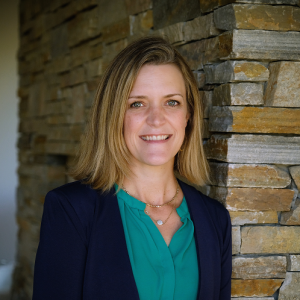
“Military personnel and other high-performing individuals in the utility industry are living and working in a high-spec, high-stakes world,” said James Wyner, CEO of Shawmut. “Yet, many of the leading market fabrics and designs for military and protective wear are not up to par with the demands of these jobs. We’re excited to leverage our expertise in textile engineering, process innovation and commitment to excellence to produce the highest quality materials for the highest performing individuals.”
Source: shawmutcorporation.com
Yokogawa Bio Frontier commences sale of nanocellulose material S-CNF
Yokogawa Bio Frontier Inc, a subsidiary of Yokogawa Electric Corporation, announced that it has commenced sales of 100% plant-derived sulfated cellulose nanofiber (S-CNF). Suitable applications for S-CNF include filler for plastic and rubber materials, film and bottle packaging, functional additives for cosmetic and paint products, and thickeners and emulsifiers.
Cellulose nanofiber is a fibrous biomass material that is derived from cellulose. It is produced by extracting the cellulose materials such as wood pulp and defibrating it to form nanosized fibers. Cellulose nanofiber is resistant to deformation when exposed to heat and provides a barrier against oxygen and other gases. Its production and disposal have a low environmental impact. S-CNF in a gel form can be dried to produce a powdered substance that has approximately 1/100th the volume and weight of the gel. The process employed by Yokogawa Bio Frontier to break down fibers and product S-CFN consumes less energy that other cellulose nanofiber production processes, reducing production costs.
Yokogawa Bio Frontier will initially provide samples to prospective customers and will scale up production in preparation for the commercial sale of the S-CFN material. S-CNF will be exhibited at the Kansai Sustainable Material Expo, which is to be held June 23-25 at the Intex Osaka exhibition centre in Japan.
Source: yokogawa.com
Techtextil and Texprocess 2022 registration is now open
Techtextil and Texprocess 2022 will take place from June 21 – 24, 2022 at Frankfurt Fair and Exhibition Center. The fairs are shifting the biennial cycle of events from odd to even years, fitting with the sector’s international event calendar.
“We see the future in a positive light and are confident that we will finally be able to give the sector the opportunity to meet and exchange ideas and information in June 2022,” says Olaf Schmidt, Vice President Textiles and Textile Technologies. “The desire for personal encounters, direct communication and new impressions is growing from day to day.”
For the first time, Techtextil and Texprocess will occupy the western sector of Frankfurt Fair and Exhibition Center with a total of four exhibition halls and offer a hybrid format of personal communication, virtual networking opportunities and digital coverage. Early registration runs through August 31, 2021.
Registration and sources: techtextil.com | texprocess.com
Indorama Ventures completes acquisition of CarbonLite’s Texas PET recycling facility
Indorama Ventures (IVL) has completed its acquisition of CarbonLite Holdings’ facility in Texas as part of the company’s commitment to increasing PET recycling capacity. Now known as Indorama Ventures Sustainable Recycling (IVSR), the Dallas site is one of the largest producers of food-grade recycled pellets in the U.S., with a combined capacity of 92,000 tons annually. The facility will recycle more than 3 billion PET plastic beverage bottles per year and support over 130 jobs. With this acquisition, along with its 2019 acquisitions of facilities in Alabama and California, IVL expands its U.S. recycling capacity to 10 billion beverage bottles a year, contributing toward its global target of recycling 50 billion bottles annually by 2025.
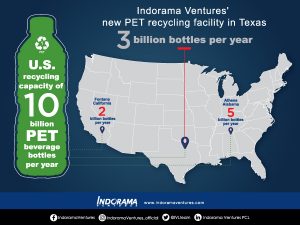
“We are excited to have completed this acquisition and welcome new employees to the Indorama Ventures family,” said D K Agarwal, CEO of Combined PET, IOD and Fibers Business at Indorama Ventures. “Dallas now joins Indorama Ventures recycling sites around the globe, dedicated to giving new life to post-consumer beverage bottles. We are also pleased to support more than 130 green jobs for the Dallas community. Indorama Ventures Sustainable Recycling, as it will now be known, will complement our existing PET and fibre businesses in the U.S. By providing an expanded global recycling presence, we will meet the growing needs of our customers.”
American beverage companies have launched the “Every Bottle Back” project to support the circular plastics economy by reinforcing the value of fully recyclable PET bottles among consumers.
Source: indoramaventures.com
Asahi Kasei and Nara Medical University confirm 226nm UVC LED efficacy against SARS-CoV-2
Asahi Kasei and Nara Medical University announced the results of the efficacy of 226 nm ultraviolet-C (UVC) LEDs in the inactivation of the coronavirus that caused COVID-19, and its effects on animal skin cells. The results showed that 99.9% of the virus was inactivated by both 226 nm and 270 nm UVC LEDs and there was significantly less effect on animal skin cells.
In the tests, 100 of the 226 nm UVC LEDs were placed on a panel in a 10×10 array. All of the UVC LEDs were created from the proprietary aluminum nitride (AIN) substrate and pseudomorphic aluminum gallium nitric (AIGaN) technology of Crystal IS. For comparison, a similar array of 270 nm UVC LEDs were also prepared. Liquid containing viable SARS-CoV-2 was injected into a Petri dish and then dried. The panel arrays were activated at an output of 440 μW/cm² . After, the virus was collected and the amount of contagion was measured by the plaque technique.
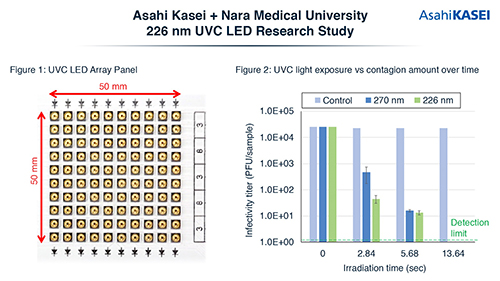
An additional experiment was conducted on mouse skin cells to estimate the damage that 226 nm UVC LED light has on animal skin compared with 270 nm light. The mouse skin cells were arranged in two layers which were then exposed to either 226 nm or 270 nm UVC LED light at a dosage of 100 mJ/cm² and 500 mJ/cm². After the exposure, the upper layer of cells was removed and the relative fraction of living cells in the bottom layer was evaluated by measuring the absorbance after applying an MTT reagent dye to the cells. The results show that the 226 nm UVC LED light had little to no effect at 100 mJ/cm² , and at 500 mJ/cm² there was less effect on the cells of the bottom layer.
All experiments were conducted on the campus of Nara Medical University in Bio Safety Level 3 (BSL3) testing facilities. Airborne viruses or their effects on humans were not tested.
Source: asahi-kasei.com
Sateri to acquire Funing Aoyang’s viscose fiber business
Sateri has entered into an agreement with Funing Aoytang Technology Co., Ltd. to acquire its viscose fiber business. The acquisition is part of Sateri’s growth strategy, which will bring Sateri’s total number of viscose mills in China to six and total annual production capacity to more than 1.8 million tonnes.
Funing Aoyang is a subsidiary of listed company Jiangsu Aoyang Health Industry Co., Ltd. Its 330,000-tonne per annum mill that will be acquired by Sateri under the agreement, is located in Aoyang Industrial Park, Funing County, Jiangsu Province. Sateri is a member of the RGE group of companies. RGE manages a group of resource-based manufacturing companies with global operations.
“This acquisition will boost Sateri’s market footprint and further strengthen our ability to serve customers in eastern and northern China,” said Allen Zhang, Sateri’s President. “We will invest in advanced technologies to upgrade the mill so as to enhance its process technology, safety and environmental performance. Through better management and operational excellence, we hope to make a positive impact to the local economy and accelerate the sustainable development of the industry.”
Closing of the acquisition is subject to procedural approvals by relevant authorities.
Source: sateri.com
Lenzing welcomes latest guidance by European Commission indicating cellulosics are not subject to SUPD
In light of the recent guidelines update by the European Commission indicating cellulosics, such as viscose and lyocell, are not defined as plastics according to the Single-Use Plastics Directive (SUPD), The Lenzing Group issued a statement welcoming the update. According to the company, its wood-based, biodegradable cellulosic fibers comprise a sustainable and innovative solution to the issue of plastics in the environment.
In the latest SUPD guidance, the European Commission specifies which products fall within the scope of the directive, with the aim of providing clarity to EU member states regarding what materials qualify as plastic waste under terms of the SUPD. The SUPD stipulates uniform labelling requirements for some of the single-use plastic products on the packaging or the product itself starting on July 03, 2021. These include feminine hygiene products and wet wipes for personal and household care containing plastic.
“Pollution of the environment – especially marine pollution – is one of the biggest problems of our time, says Robert van de Kerkhof, Member of the Managing Board of the Lenzing Group. “For this reason, we welcome the measures taken by the EU to reduce certain single-use plastic products and the transition to closed-loop models. Lenzing has been investing in the development of sustainable and innovative solutions for the textile and nonwovens industry for many years and will also continue in the future to intensively work on achieving systemic change towards a circular economy.”
Lenzing’s sustainability targets include continuing investments in developing sustainable innovations, implementing climate objectives focusing on carbon neutrality and its environmental initiative #ItsInOurHands. Products bearing the Veocel brand logo on their packaging are produced with biodegradable, cellulosic materials.
Source: lenzing.com
Cargill, HELM invest $300M in production of bio-based intermediates
Cargill and HELM have entered into a joint venture, Qore, to help leading brands replace fossil-based chemistries with bio-based intermediates, with the aim of enabling reduced greenhouse gas emissions. As part of the agreement, both companies are investing a combined $300M to build the first commercial-scale, renewable BDO (1,4-butanediol) facility in the U.S. These bio-based intermediates are designed to provide the apparel, automotive, electronics and packaging industries the ability to improve their environmental footprint without sacrificing product performance or altering their existing downstream manufacturing processes.
The Qore joint venture will focus on producing QIRA, the next-generation BDO, which is made biologically through the fermentation of plant-based sugars and can save up to 93% of greenhouse gas emissions when replacing chemical intermediates made from traditional fossil sources, according to Cargill. For example, QIRA can be used for making spandex and other polyester-based chemical fibers as well as biodegradable plastics, polyurethane coatings, sealants and artificial leathers, thereby improving their environmental footprint.
Cargill and HELM plan to build the bio-based intermediate production facility at Cargill’s existing biotechnology campus and corn refining operation in Eddyville, Iowa. The plant will be completed and operating in 2024 to meet the demanding specification of product supply chains.
Qore has licensed Genomatica’s BDO process technology and is using Cargill’s global feedstock supply and fermentation manufacturing expertise to initially produce and distribute an expected 65,000 metric tons per year minimally of its first bio-intermediate, QIRA. HELM will work with brand owners, original equipment manufacturers and their suppliers to incorporate QIRA into their respective products.
Source: cargill.com
NIRI invests in new meltblown line, expanding R&D and prototyping capability
NIRI (Nonwovens Innovation Research Institute) has recently invested in a new meltblown line, expanding its facilities to support client product development, sustainability and manufacturing innovation across various applications.
“We were mindful when specifying the new equipment that we wanted to invest in the most flexible and adaptable technology available, to enable the development of a wide range of nonwoven structures – with the potential to develop unique filament and mechanical properties, further facilitating our clients’ R&D and prototyping,” said Matthew Tipper, Ph.D., CEO at NIRI.
“In response to the COVID-19 pandemic, at NIRI we’ve been using our expertise and extensive facilities for the continued development of PPE and medical devices,” said Ross Ward, Ph.D., NIRI’s new business development manager. “This is clearly an area where our new equipment will benefit clients and, ultimately, the general public. We are keenly interested in exploring the wider opportunities for meltblown nonwovens, such as developing products from bio-polymers, chemically recycled polymers and novel masterbatches with enhanced functionality. This latest investment will help us facilitate the rapid development of innovative and commercially viable products for our customers.”
Source: nonwovens-innovation.com
Sateri to expand Lyocell production in China with new facilities
Sateri is planning to expand its Lyocell production in China, with a total planned annual capacity of up to 500,000 tonnes by 2025. Sateri recently announced a new 100,000 tonne facility in Changzhou, Jiangsu province, with another 100,000 tonne facility set to be built in Nantong, Jiangsu province. The Changzhou Lyocell facility is expected to commence production in the third quarter of 2022 and will create more than 800 jobs.
“Sateri’s continued investment in Lyocell not only responds to the changing needs of the market and the textile industry but also supports China’s green development plans,” said Allen Zhang, President of Sateri. “It is also very much a part of Sateri’s 2030 Vision commitment to sustainable development where we actively seek to adopt a circular economy model through clean and closed-loop production technology and innovation.”
Sateri’s Lyocell is made from wood pulp sourced from certified and sustainable plantations, making it a natural and biodegradable fiber. It is manufactured using closed-loop technology, requiring low chemical input during the production process, and utilizing an organic solvent that can be almost fully recovered and recycled.
“Customer-centricity is Sateri’s promise,” said vice president and general manager of Lyocell and Nonwovens Business Tom Liu. “The new expansion plans will enable us to extend our domestic and international market reach and provide our customers with high quality and comprehensive fiber products. At the same time, we will invest in technology improvement, application development, and brand collaboration to bolster the industry.”
Source: sateri.com
Presentation topics being accepted for 2021 Digital Textile Printing Conference
The December 2021 Digital Textile Printing Conference co-sponsored by AATCC and Printing United Alliance is now accepting presentation topics. Presentations will be 30 minutes long, similar style, and either a single- or multi-presenter lecture or panel discussion.
The 2021 conference program will focus on solutions-based topics in the following areas:
- Global market conditions and economic forecasts for digital textile printing
- On-demand printing
- Latest developments in design software, design considerations and best practices for digital textile printing
- Technology advances in digital textile printers, inks and production/RIP software
- Digital textile workflows
- Case studies
- Textile finishing and cut-and-sew
- Automation in digital textile manufacturing
- Test methods for digitally printed textiles
- Emerging business models in digital textile printing
- Digital transformation and its influence on supply chain relationships
Presenters are not required to be members of AATCC or Printing United Alliance. Proposals can be submitted to Ray Weiss at rweiss@printing.org by July 30, 2021.
Source: aatcc.org | printing.org
European Commission releases new SUPD guidance indicating lyocell and viscose are not ‘chemically modified’ while PHA is
The European Commission has issued updated guidance on its Single-Use Plastics Directive (SUPD), originally published in June 2019. The SUPD has generated much debate around the definition of plastic in terms of certain fibers and fiber-based products, as industry players have been seeking to better understand how the SUPD defines natural polymers and chemically modified natural polymers. The position of the SUPD as it pertains to such materials as polyhydroxyalkanoates (PHAs) and cellulosics, such viscose and lyocell, has been of particular interest.
The current update from the European Commission clarifies the current view is PHAs are considered “chemically modified” and thus are not natural polymers, while viscose and lyocell would not be considered “chemically modified” and thus are natural polymers. As such, PHA would be subject to the rules of the SUPD, while viscose and lyocell would not.
In its latest guidance, the European Commission says:
… substances which occur in nature means a naturally occurring substance as such, unprocessed or processed only by manual, mechanical or gravitational means, by dissolution in water, by flotation, by extraction with water, by steam distillation or by heating solely to remove water, or which is extracted from air by other means.
In view of the above, the terms natural polymer and naturally occurring substance are two distinct terms and should not be confused. A key distinction relates to the extraction methods allowed. The scope of the natural polymer refers to a broader group that is independent of the method used to extract the substance from nature. Furthermore, point (39) of Article 3 of the [Regulation (EC) No 1907/2006 (REACH Regulation)] is not directly referred to in the Directive. A consequence of this distinction and applying the definition from the Guidance is, for example, that cellulose and lignin extracted from wood and corn starch obtained via wet milling meet the definition of natural polymer.
Another key distinction is whether the polymerisation process has taken place in nature or is the result of an industrial process involving living organisms. Based on the REACH Regulation and the related [European Chemicals Agency (ECHA)] Guidance, polymers produced via an industrial fermentation process are not considered natural polymers since polymerisation has not taken place in nature. Therefore, polymers resulting from biosynthesis through man-made cultivation and fermentation processes in industrial settings, e.g., polyhydroxyalkanoates (PHA), are not considered natural polymers as not being the result of a polymerisation process that has taken place in nature. In general, if a polymer is obtained from an industrial process and the same type of polymer happens to exist in nature, the manufactured polymer does not qualify as a natural polymer.
Recital 11 of the Directive explains that the term not chemically modified substances should be read in accordance with point (40) of Article 3 of the REACH Regulation, which states: “not chemically modified substance: means a substance whose chemical structure remains unchanged, even if it has undergone a chemical process or treatment, or a physical mineralogical transformation, for instance to remove impurities.”
The terms have not been chemically modified in point (1) of Article 3 of the Directive, with regard to natural polymers, are to be interpreted as follows: the decision whether a polymer has been chemically modified in its production or not should take into account only the difference between the ingoing and the resulting polymer, disregarding any modifications which might have taken place during production processes, as those are not relevant for the properties and the behaviour of the polymer used and eventually potentially released into the environment.
This means that, for example, regenerated cellulose, e.g. in form of viscose, lyocell and cellulosic film, is not considered to be chemically modified, as the resulting polymers are not chemically modified compared to the ingoing polymer. Cellulose acetate is considered to be chemically modified given that, compared to the ingoing natural polymer, the chemical modifications of cellulose during the production process remain present at the end of the production process.
Where changes in the chemical structure of a polymer result from reactions that are only taking place during the extraction process of a natural polymer (e.g. wood pulping process to extract cellulose and lignin), these are not considered to result in a chemical modification of the natural polymer in the meaning of point (1) of Article 3 and Recital 11 of the Directive. Therefore, paper material resulting from the wood pulping process is not considered to be made of chemically modified natural polymers. This interpretation is also in line with the Impact Assessment accompanying the European Commission’s proposal for this Directive (hereafter, “the Impact Assessment”), in which paper-based products without plastic lining or coating have been identified as available, more sustainable, alternatives to single-use plastic products.
Source: ec.europa.eu
Read the full guidance report: https://ec.europa.eu/environment/pdf/plastics/guidelines_single-use_plastics_products.pdf
Kimberly-Clark partners with RWDC Industries to secure PHA source material; advance sustainability goals
In pursuit of its 2030 ambition to reduce the use of fossil fuel-based plastics by half before the end of the decade, Kimberly-Clark announced a partnership with the biotech company RWDC Industries to advance sustainable technology aimed at addressing the issue of single-use plastics.
The collaboration brings together Kimberly-Clark’s experience in nonwoven technologies and resin development with RDWC’s biopolymer solutions. The partnership will provide Kimberly-Clark with RWDC’s polyhydroxyalkanoates (PHA) source material, Solon, to develop additional products that are marine degradable.
“We’ve seen the growing demand from consumers and governments for companies to provide more sustainable solutions to single-use plastics,” said Liz Metz, vice president of Kimberly-Clark’s Global Nonwovens business. “Solving for these challenges will take game-changing innovation as well as collaboration with industry-leading partners like RWDC to help speed these new materials to market.”
This new source material for Kimberly-Clark’s personal care products is one of the strategies the company is developing as part of its recently announced sustainability ambitions for 2030 that include a transition away from traditional fossil fuel-based plastics toward more renewable and regenerative materials.
The company is working to launch products featuring this innovation over the next five years, focusing first on product categories that address global demand for more sustainable products.
“We’re thrilled to partner with Kimberly-Clark and play an important role in the future development of its essential products,” said Dr. Daniel Carraway, co-founder and Chief Executive Officer of RWDC. “This partnership showcases how industry leaders can leverage the agility of emerging technologies to deliver real change. Together, we are demonstrating that we can alter the alarming growth trajectory of plastic waste while retaining quality and enabling environmental goals to be met.”
RWDC, based in Athens, Ga. and Singapore, combines expertise in PHA properties and applications with the engineering know-how to reach cost-effective industrial scale.
RWDC uses plant-based oils to produce its proprietary PHA, which can be composted in home and industrial composting facilities. Should products or packaging made with PHA find their way into the environment, they biodegrade in soil, fresh water, and marine settings, preventing persistent plastics from accumulating in the environment.
Source: kimberly-clark.com
As automotive sector recovers, DiloGroup receives repeat order for web-forming and needling line for glass and PP fiber
As the automotive sector recovers from the impacts of the COVID-19 pandemic, investments in nonwoven production lines for the manufacture of glass fiber-reinforced thermo-bonded structural parts is picking up. Along this line, DiloGroup has received a repeat order from Zhejiang Huajiang Science and Technology Co., Ltd. for a complete web-forming and needling line to process blends of glass and polypropylene fiber through a fiber preparation system, web-forming, carding and cross-lapping and needling units.
The fiber preparation system from DiloTemafa is adapted to the special requirements for processing glass fiber in the most efficient way and to provide homogeneous blends with PP. The component-dependent Baltromix blending system uses weighing pans designed to provide accurately dosed fiber material on the collecting apron, which is further opened and
blended in a carding willow. This carding willow is used in most of DiloGroup line installations as a successful tool for further opening and blending tasks, in many cases together with a smaller chamber for final blending.
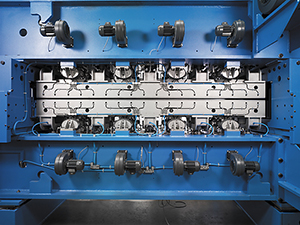
Infeed side with blowing nozzles at the stitching plates. Photo courtesy of DiloGroup.
In many installations DiloTemafa also provides the recycling of quality fiber derived from the whole process, which is sucked off at many stations in the fiber preparation and web-forming
system in order to save fiber material.
Installations for fiber transport and for fiber recycling within a line together with re-opened edge trim material from a needling station and for dedusting the machines by a drum filter or bag filter station can be specifically engineered and designed by the DiloGroup air system engineering department.
The efficiency of a whole line processing mineral fiber largely depends on the efficiency in dedusting all machine components from bale opening through needling. Solutions for this demanding task are part of the expertise of DiloSystems as general contractor. At the card, the so-called “fancy roller” is part of the system to provide the means to build the web on this double-doffer system without leaving too much fiber within the card clothing wire.
Dilo works closely together with a range of customers and card wire suppliers to provide an optimum wire system for processing the demanding range of mineral fibers successfully.
In the needleloom, prolonging the intervals between cleaning stops is vital to efficiency. Therefore, blowing nozzles to clean the perforated plates, stripper and bed plates are installed within the needleloom. The dust exhaust is separated at a filter station. The majority of Dilo lines today include an elaborate air system and the necessary components for fiber transport, dust transport and the transport of recycled fibers, which are introduced at the beginning of the line.
Source: dilo.de
PolyQuest to expand PET facility in South Carolina
PolyQuest, Inc. (PQ), a leading distributor of PET resins and manufacturer of recycled PET resins in North America, announced the expansion of its facility in Darlington, South Carolina.
Established in 2004, the Darlington facility has served as the company’s flagship distribution and recycling location. The expansion will include the addition of four new buildings totaling 225,000 square feet, two new rail spurs, enhanced material handling capabilities, and new machinery to process incremental volume of recycled PET and other thermoplastics. PolyQuest is adding 15 new jobs at the Darlington site with plans to increase.
Construction has already begun at the site with an anticipated completion date of February 2022. “Once this expansion is complete our Darlington facility will have 525,000 square feet, the capacity to hold 38 rail cars, 160 million pounds of recycled plastic processing capacity, approximately 100 employees, and over $50 million invested since 2004,” said Ryan Nettles, vice president of operations for PolyQuest. “PolyQuest’s goal remains to be the value-added supplier of PET, PP, and recycled PET products to our customers and the expansion at Darlington enhances our ability to achieve that goal.”
“Our business continues to grow at exponential levels, both organically in virgin PET and rPET as well as via access to new resins such as polypropylene and polyethylene,” said Tod Durst, president of PolyQuest. “With demand for our products at the highest level we have experienced in our company’s history and limited available supply, our customers are facing extended lead times which predicates that we hold higher levels of safety stock to service their needs. That factor, coupled with the continued push for recycled plastic content from brand owners and converters alike, made our expansion in Darlington a logical one.”
Source: polyquest.com
Oerlikon outlines plan for ITMA ASIA + CITME 2021
During a VDMA press conference, André Wissenberg, head of marketing and corporate communications and public affairs for the Oerlikon Polymer Processing Solutions Division, highlighted his company’s plan for ITMA ASIA+ CITME 2021.
“Looking ahead to ITMA Asia 2021, we are looking forward to welcoming our long-standing customers at our booth in Hall 7, A54, and of course very much hope to make new contacts as well,” said Wissenberg. “Due to the Corona pandemic, we have decided to concentrate with our Chinese sales and service teams on guests primarily from China and greater Asia. However, some experts from Germany, who are working in China at our locations anyway, will be live on site at the booth. Other experts from Germany, India and US will be available online for the entire 5 days of the trade fair and will simply be connected by video conference to the discussion with the visitors on site if there is a need for.”

Oerlikon’s product portfolio ranges from melt to yarn, fibers and nonwovens. The company will be showcasing its sustainable, energy-efficient technology solutions for the production of polyester, polypropylene, nylon and other materials. In addition, Oerlikon will feature its spinning in-house recycling solutions and biopolymer plant solutions, as well as the increasingly important role of digital data handling in today’s textile manufacturing environments.
“At ITMA Asia 2021, we will present the next generation of this automatic texturing solution with up to 25% energy saving and up to 30 % higher production speed, easy maintenance and best yarn quality,” said Wissenberg. “The core of this machine, the EvoCooler, will be shown as an exhibit in combination with digital solutions like AIM4DTY. We will also invite all our guests to our Open House at our Oerlikon plant in Suzhou.”
Source: oerlikon.com
Meltblown Technologies, Dirteeze announce distribution agreement
Meltblown Technologies (MBT) and Dirteeze announced an agreement under which MBT will be offering the Dirteeze Rough and Smooth line of premoistened wipes to distributors effective immediately.
“Once we met with the team at Dirteeze, tested their product and discussed the synergies in our businesses we realized it was an instant fit,” said MBT president, Derek Yurgaitis. “Our customers have a great need for the types of products made by Dirteeze which is by far the best wipe available in the market today.”
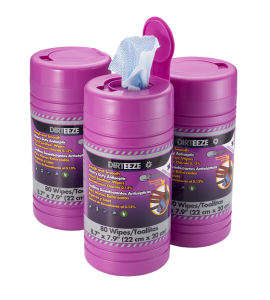
“We are thrilled to partner with MBT and their customer-focused sales team to promote the Dirteeze brand of wipes,” said Roy Scharrer, Dirteeze Director. “Derek and his sales team embody the same drive for supplying the best products to solve their customers’ needs as we do. Equally, we feel this opportunity serves as a great platform to leverage awareness of our brand to a broader distribution base. We look forward to evolving and growing this partnership with MBT as a representative of the Dirteeze brand.”
Dirteeze, the originator of agitation technology built into a wet wipe, was launched in the UK market in 2007. Now, Dirteeze-US is bringing the company’s most popular line of wipes to the U.S. market.
Source: meltblowntechnologies.com
Texas Tech professor paves the way for nonwoven production critical to India’s COVID-19 response
As COVID-19 surged through the U.S. last spring and summer, the country found itself facing an alarming shortage of the personal protective equipment (PPE) frontline health care workers desperately needed to battle the pandemic.
This year, on the other side of the globe, India is embroiled in the same struggle, except for one key thing. Until mid-2020, the U.S. relied on China to produce most of the PPE it used. In contrast, India is self-reliant – it can produce its own PPE because of its widespread support for and adoption of the technical textiles industry. Technical textiles such as nonwoven fabrics are important components of facemasks, medical gowns and PPE.
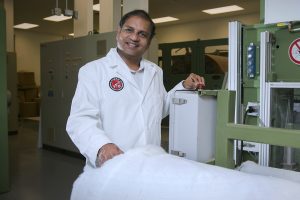
It wasn’t always this way, but the work of one Texas Tech University professor over the last two-plus decades has played a vital role in preparing India for the very fight it’s in now.
After completing his doctorate in materials, textiles and fiber science in 1998, Seshadri Ramkumar joined Texas Tech. In 1999, with a major investment from the U.S. Department of Defense, he began researching nonwoven materials for defensive applications, such as chemical and environmental decontamination.
The Indian government had begun its own work in the nonwovens sector, but it was nascent. To help the field grow, Ramkumar – now a professor of advanced materials – has partnered with the Indian government and technical textiles organizations around the world to host conferences in India since the early 2000s.
Read the full story: https://today.ttu.edu/posts/2021/06/Stories/saving-lives-indias-technical-textile-revolution-paved-way-for-covid-19-response
Source: ttu.edu
INDA announces World of Wipes conference program highlights
INDA is gearing up for its World of Wipes (WOW) International Conference July 12-15 in Atlanta, with a conference program featuring sessions on COVID-19 impacts in the wipes market, consumer outlooks and technology trends. Among the program highlights is a session titled COVID-19 Impact on Wipes Consumption and Cleaning Habits, which features the following speakers and topics:
- Consumer Wipes Usage During the COVID-19 Pandemic and What the ‘Next Normal’ May Look Like – Christopher Dresselhuys, Business Director, North American Retail Wipes, Rockline Industries will present research and survey results on changing consumer wipe buying behaviors.
- Wipes, Cleaning and COVID: What Have We Learned Through the Pandemic? – Brian Sansoni, Senior Vice President, Communications, Outreach and Membership, The American Cleaning Institute will discuss ACI’s 2021 National Cleaning Survey and talk about how the pandemic may change consumers’ views and future use of cleaning products.
- Challenges and Tough Decisions in Pandemic Response – Jason White, Associate Research Fellow, The Clorox Company will share the company’s response to increased demand for disinfecting products that created supply issues, requiring quick decision making by Clorox to maximize the availability of these products to help consumers protect themselves during the pandemic.
Another session, titled Trends in the Wipes Markets and Among Consumers, will feature presentations including:
- Understanding the State of the Nonwovens Wipes Industry and a Market Gone Mad – Brad Kalil, Director of Market Intelligence and Economic Insights, INDA will present a pre-pandemic view of the nonwovens markets, the current state, and a look into the future.
- I&K Cleaning Wipes: Market Statistics and End User Insights – Laura Mahecha, Industry Manager, I&I Cleaning Products, Kline & Company will share insights on the Industrial and Institutional (I&I) cleaning products market.
- Consumer Wipes: Look at the Post-COVID World – Svetlana Uduslivaia, Head of Research, Euromonitor International will reveal an updated forecast for consumer wipes globally, the latest innovation trends across wipes categories and the latest retail channel dynamic.
- Growth and Demand of Canister Wipes Converting Lines in the U.S. and Around the Globe – Jay Roth, Director of Sales, Elsner Engineering Works, Inc. will share insights on how the COVID crisis has impacted the business of converters and co-packers.
WOW 2021 will also feature INDA’s Wipes Academy training program; three days of conference program content; two days of tabletop displays; presentation of the World of Wipes Innovation Award and the INDA Lifetime Technical Achievement Award; plus a welcome reception and networking and socializing opportunities.
Source: worldofwipes.org
* International Fiber Journal is owned by INDA, Association of the Nonwoven Fabrics Industry (inda.org).
Fitesa to add hydroentangle line in Brazil
Fitesa announced the addition of a hydroentangle (Spunlace) line in Jacarei (São Paulo, Brazil), at a site recently acquired from Freudenberg.
The investment will primarily serve the baby wipes market and is planned to start-up on Q1 2022. The line is equipped with the customized Jetlace hydroentanglement unit and neXdry through-air-dryer from ANDRITZ and will produce premium quality of hydroentangled roll goods. The line is designed to operate a variety of raw materials, including biobased, recycled and circular fibers.
“I am proud to introduce this complementary technology to our portfolio, knowing it will enable us to add significant value to local and regional partners in yet another growing application,” said Mateus Inacio, senior vice president for Fitesa in Latin America.
Source: fitesa.com
AFFOA announces $3M investment program for functional fiber and fabric technologies
Advanced Functional Fabrics of America (AFFOA) announced the launch of Project Call 2.0 (PC 2.0), a ~$3.0 million investment in new development to expand technology capabilities and jumpstart key areas of strategic technology growth toward the scaling of advanced functional fiber and fabric technologies.
The mission of AFFOA is to rekindle the domestic textiles industry by leading a nationwide enterprise for advanced fiber & fabric technology development and manufacturing, enabling revolutionary system capabilities for national security and commercial markets. To pursue this mission, AFFOA is addressing the spectrum of challenges associated with volume manufacturing of revolutionary fibers and textiles from design to end product prototypes through various efforts including project calls. The goal of these efforts is to facilitate the transition of revolutionary fibers and textiles from lab prototype demonstrations to pilot production (Manufacturing Readiness Level (MRL) of 4 to 7), delivering the functionality of sophisticated fiber devices into systems at scale.
The scope of AFFOA Project Call 2.0 represents AFFOA’s shifting strategy to include addressing manufacturing and foundational gaps that support the AFFOA ecosystem and goal of supporting the domestic textile industrial base. The four principal guidelines of Project Call 2.0 below reflect this strategy:
- Key metrics will drive the success of advanced functional fabrics and need to include the ability to understand manufacturing performance (including cost, yield, quantity) in light of rapidly developing concepts in automation of smart textiles.
- Demonstration of integrated systems should be focused on applications identified in the topics that resolve critical user needs.
- Textile devices and components should be developed to support the evolving technology building blocks and made to be accessible to the US textile ecosystem.
- Evaluation of advanced functional fabric materials, processes, and products need to be assessed, critically, with respect to new testing standards. Likewise, design rules for the manufacturing of smart textiles need to be established and benchmarked.
The scope of each of the topics has been defined through input from the government and industry representatives. To further refine the scope, members of AFFOA’s Fabric Innovation Network were surveyed to determine areas of highest interest.
PC 2.0 Topics (and short description):
Topic 2.1: Team System Demonstration – Full system integration that utilizes multiple technologies in the area of smart electronic textiles.
Topic 2.2: Materials and Process Assessment – Assessment of key design rule metrics and robustness of commercially available electronic materials for their use in electronic textiles.
Topic 2.3: Textile Device Advancement – MRL advancement of electronic textile devices.
Topic 2.4: Textile Device Connectors and Integration Strategies – Advanced strategies for robust connectors and device placement that supports an increase in MRL for electronic textiles.
Topic 2.5: Textile Technology Translation – MRL and/or TRL advancement of a textile-based technology innovation for small business and start-up companies.
Source: go.affoa.org


